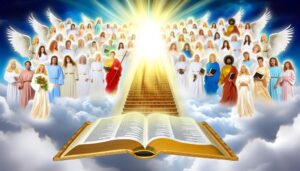Holy Fire Meaning in the Bible: Purification and Presence
In the Bible, holy fire symbolizes divine presence, purity, and power, manifesting in critical narratives such as the Burning Bush (Exodus 3) where God’s aseity and commissioning of Moses are central, and on Mount Sinai (Exodus 19) signifying covenantal authority. Elijah’s Mount Carmel encounter (1 Kings 18) illustrates divine supremacy over false idols, while the Fiery Furnace (Daniel 3) reveals God’s protection amid persecution.
At Pentecost (Acts 2), tongues of fire denote the Holy Spirit’s empowerment and the inauguration of the New Covenant. These instances collectively underscore the multifaceted nature of God’s engagement with humanity.
Explore more to understand the deeper theological implications.
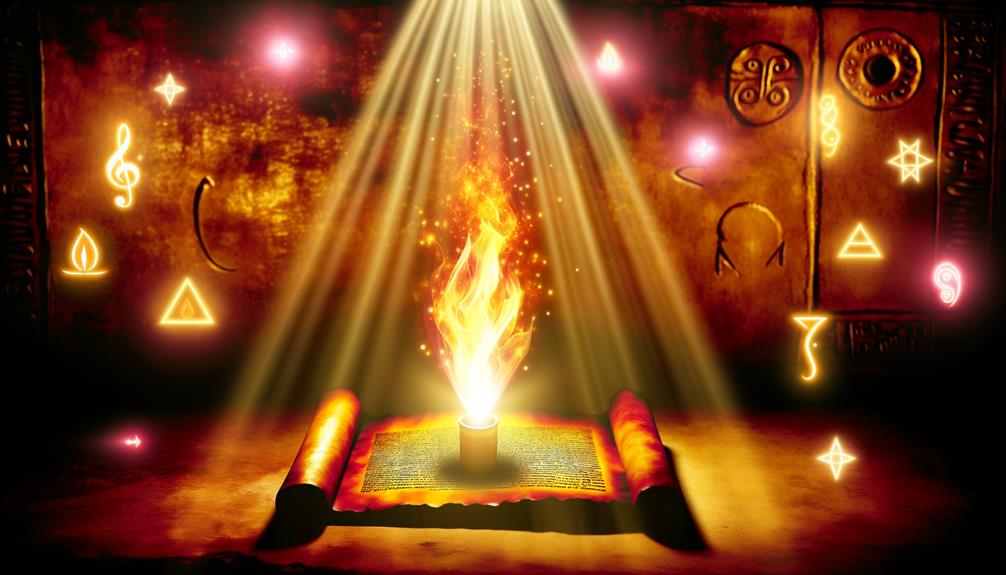
Holy Fire Meaning in the Bible – Divine Presence and Purification
| Concept | Meaning/Significance | Scripture Reference |
|---|---|---|
| God’s Presence | Holy fire symbolizes God’s divine presence and power | Exodus 3:2, Deuteronomy 4:24 |
| Purification | Represents the purification of sin and holiness | Isaiah 6:6-7, Malachi 3:2-3 |
| Judgment | Used to signify God’s judgment and consuming nature | 2 Kings 1:10, Revelation 20:9 |
| Holy Spirit | Fire symbolizes the Holy Spirit’s presence and empowerment | Acts 2:3, Matthew 3:11 |
| Covenant with God | Fire signifies God’s covenant and promises to His people | Genesis 15:17, Exodus 19:18 |
The Burning Bush

In the biblical narrative, the Burning Bush serves as a profound theophany, revealing God’s presence and purpose to Moses in a manner that transcends ordinary human experience.
Found in Exodus 3:1-4:17, the encounter occurs on Mount Horeb, where Moses observes a bush that burns without being consumed. This paradoxical phenomenon signifies the divine nature—eternal, self-sustaining, and unapproachable by human standards.
The voice from the bush introduces God as ‘I AM WHO I AM,’ a declaration of His aseity and immutable existence. Additionally, this moment marks Moses’ commissioning as the deliverer of Israel, underscoring God’s active involvement in human history.
Consequently, the Burning Bush encapsulates the mystery, holiness, and mission inherent in divine revelation.
Fire on Mount Sinai
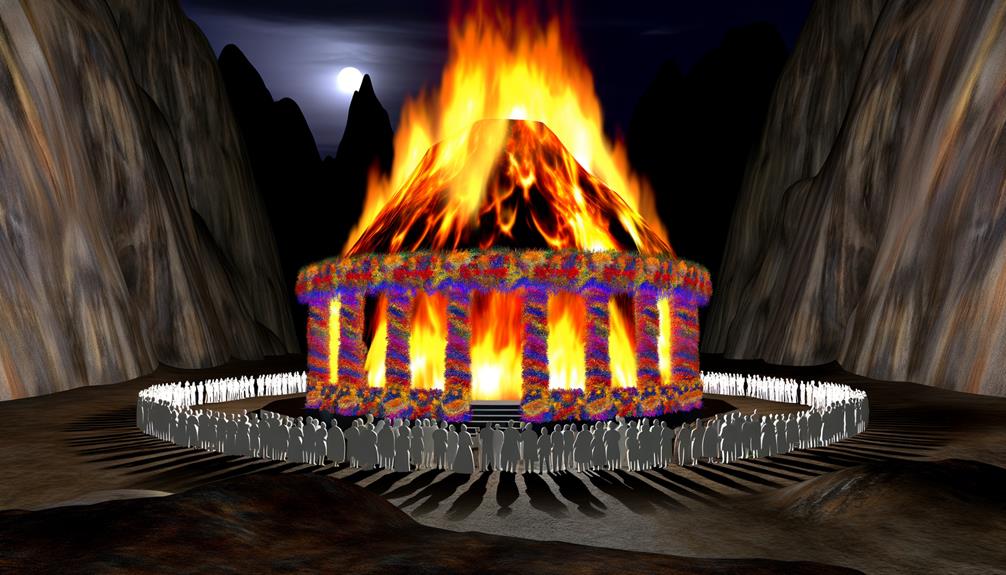
Following the divine encounter at the Burning Bush, the manifestation of God through fire reaches a climactic and communal revelation on Mount Sinai, where the entire nation of Israel witnesses God’s descent in a blazing fire.
This theophany, described in Exodus 19:18, symbolizes divine purity, power, and the awe-inspiring presence of Yahweh.
The fire on Mount Sinai not only conveys God’s holiness but also serves as a medium for divine communication, as God delivers the Ten Commandments amidst thunder, lightning, and smoke.
This event underscores the covenantal relationship between God and Israel, establishing a foundational moment in biblical theology.
The fire serves as both a purifying force and a tangible sign of the divine authority and majesty that governs the covenant.
Elijah’s Sacrifice
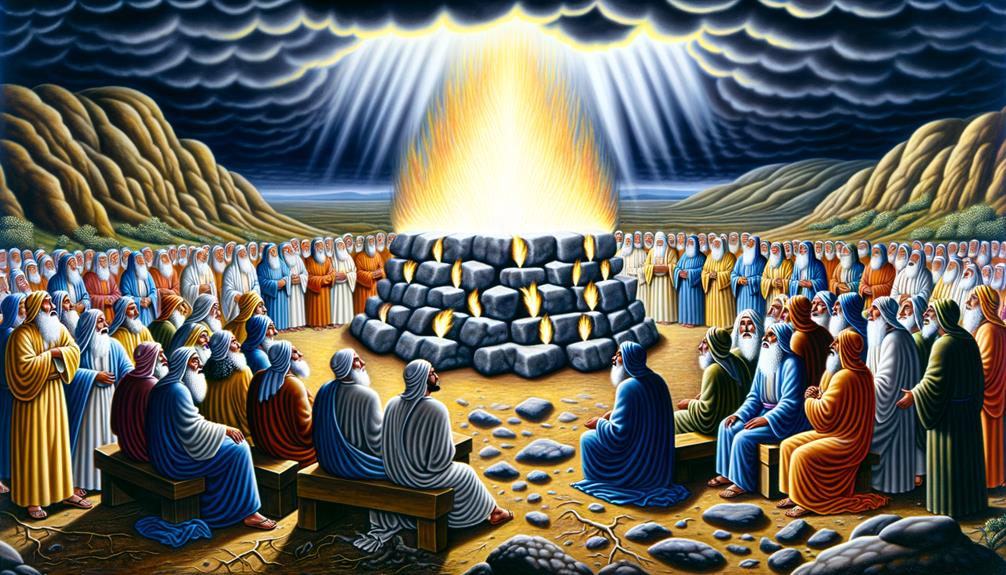
Demonstrating the divine approval and supremacy of Yahweh over the prophets of Baal, the dramatic episode of Elijah’s sacrifice on Mount Carmel, described in 1 Kings 18, epitomizes the holy fire as a symbol of God’s power to consume offerings and affirm true worship.
In this narrative, Elijah challenges the prophets of Baal to summon fire from their deity to ignite a sacrificial bull. When Baal fails to respond, Elijah prays, and Yahweh’s fire descends, consuming the offering, wood, stones, dust, and water.
This supernatural act not only repudiates Baal’s power but also validates Yahweh’s exclusive divinity and authenticity. The holy fire here underscores divine intervention and establishes a theological cornerstone for understanding God’s omnipotence and covenantal fidelity.
The Fiery Furnace
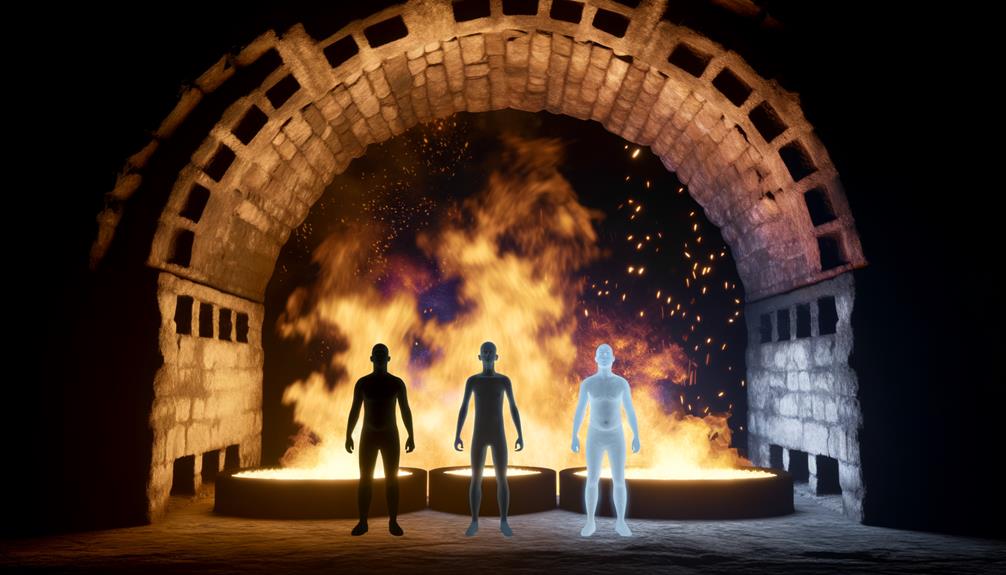
The narrative of the Fiery Furnace in Daniel 3 further exemplifies the motif of holy fire, this time illustrating God’s deliverance and the steadfast faith of Shadrach, Meshach, and Abednego amidst persecution. Nebuchadnezzar’s decree to worship the golden image juxtaposes human frailty against divine omnipotence. As the three Hebrews are cast into the superheated furnace, their miraculous preservation underscores the sanctity of divine intervention.
| Character | Action | Significance |
|---|---|---|
| Shadrach, Meshach, Abednego | Refusal to worship the golden image | Demonstrates unwavering faith and devotion |
| Nebuchadnezzar | Commands the furnace to be heated sevenfold | Symbolizes extreme human opposition to God |
| Divine Presence | Appears in the furnace with the trio | Manifestation of God’s protective and holy fire |
This episode powerfully conveys that holy fire purifies and protects the faithful.
Pentecost and Tongues of Fire
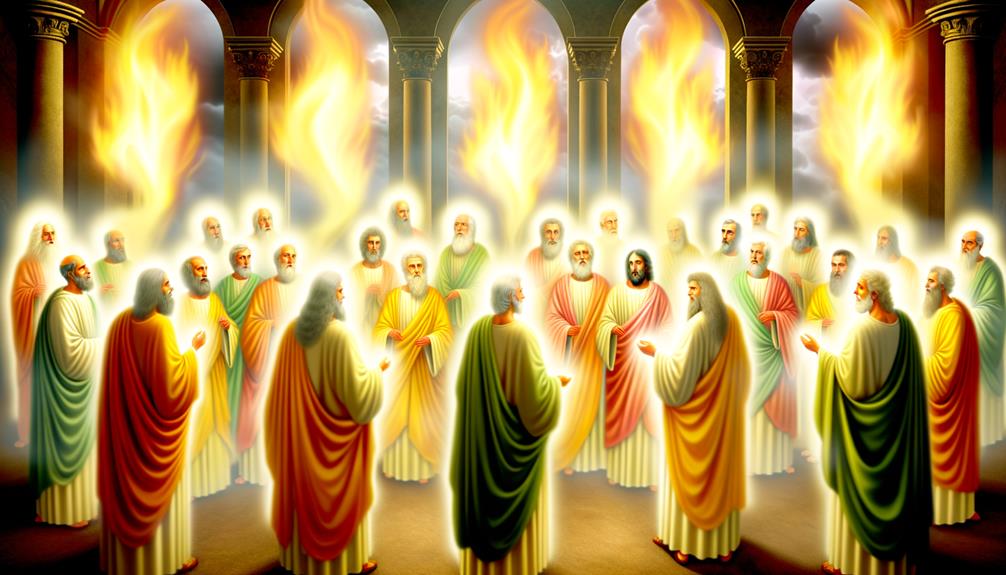
At Pentecost, the appearance of tongues of fire upon the disciples signifies the indwelling presence and empowerment of the Holy Spirit, marking a pivotal moment in the nascent Christian church. This phenomenon, described in Acts 2:1-4, encapsulates several theological dimensions:
- Divine Empowerment: The Holy Spirit equips the disciples with boldness and spiritual gifts.
- Unity in Diversity: The disciples speak in various tongues, symbolizing the universal reach of the Gospel.
- Fulfillment of Prophecy: Joel 2:28-29’s prophecy about the outpouring of the Spirit is realized.
- New Covenant Initiation: The event signifies the commencement of a new era in God’s redemptive plan.
Each element underscores the transformative power of the Holy Spirit in establishing the early church.
Conclusion
The concept of holy fire in the Bible manifests as a divine instrument of communication, judgment, and empowerment. From the burning bush to the tongues of fire at Pentecost, these instances illustrate a profound intersection between the divine and the mortal. The holy fire also represents the spiritual significance of holy convocation, bringing people together in worship and communal gathering. It symbolizes the presence of God among His people and the unity of believers in faith. Throughout the Bible, the holy fire serves as a tangible expression of God’s power and presence in the lives of His followers.
Imagine a persecuted believer finding solace in the story of Shadrach, Meshach, and Abednego, who were delivered from the fiery furnace. Such narratives continue to inspire faith and resilience, underscoring the transformative power of divine intervention.



